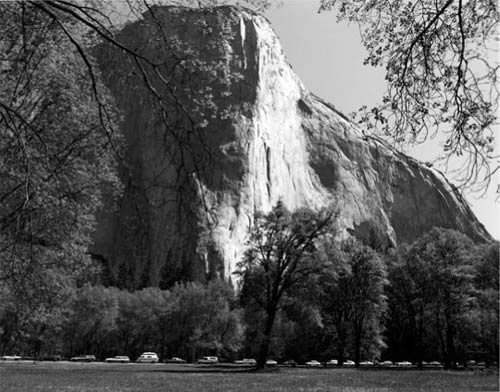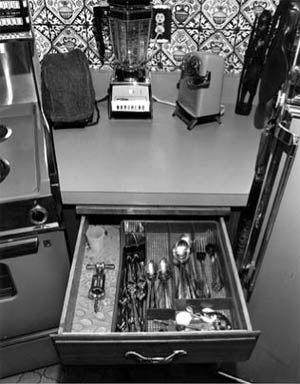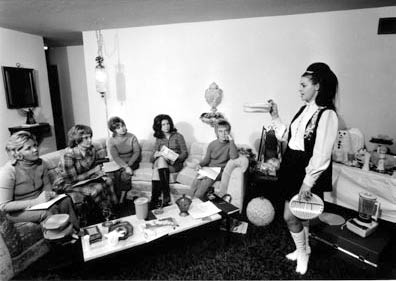|
|
|
 |
 |
 |
 |

Light & Ink
Bill Owens: Photographing the Suburban Soul
Interview by Robert Hirsch
Bill Owens’s Suburbia (1972) is a quintessential photographic study of suburban California life and of its rituals. Owens followed with Our Kind of People (1975), which examined political, religious, scholastic, and sports groups and their practices. Then he published Working: I Do It for Money (1977) that looked at people who work from nine to five. In 1976, Owens received a Guggenheim Fellowship and, afterwards, two National Endowment for the Arts awards. Between 1978 to the 1982 he was a freelance photographer and did work for magazines including Life and Newsweek. In 1982 Owens started Buffalo Bill’s Brewery and published American Brewer Magazine (1984 - 2001). In 2004 Owens added to his visual anthropology cycle of the American middle class with the publication of Leisure: Americans at Play. Currently, Owens is making mini digital movies about America society. This piece is the result of conversations and emails between Owens and the author from December 2004 through March 2005.
 |
| On the weekends the traffic is always bumper to bumper just like a commute day. You drive for four hours to look at El Capitan for four minutes, and most people never get out of the car. 1977 Bill Owens |
Robert Hirsch: How did your personality allow you to do your suburban projects?
Bill Owens: My mother worked in the shipyards and my dad was a construction worker. Neither graduated from high school, but my dad always told me to learn from everybody. My mom had the gift of gab and made friends with everybody. They gave me a personality of a natural salesman, one who can project his personality. My photography is successful because I sell my ideas and myself to people. I speak well, I am direct, I carry myself professionally, and I don’t use the F word too often.
RH: How were you different from other kids?
BO: I was dyslexic and didn’t read. I skimmed comic books. I was at the bottom of the class. No one would have predicted I would succeed at anything, but I am proof one can grow and mature. We can expand our intellectual capacity and our intellectual compassion, which is why I have a problem with our president; I don’t see much human compassion in him.
RH: How did you overcome your dyslexia and learn to read?
BO: I took a class from John Gardner and he made me realize I was a good storyteller, but I flunked out of college and hitchhiked around the world. I came back a changed individual and started taking remedial courses. Now I brag I have Attention Deficit Disorder. I take credit for everything. Why not? It doesn’t mean a damn thing in life. All it does is brand you as being different. And sometimes you can wear that badge of difference proudly and say screw you.
RH: Why did you join the Peace Corps?
BO: I was raised in the Quaker church. We were socially concerned and believed in tithing to help the less fortunate because that is what the Bible preaches. In college I took part in anti-Vietnam War demonstrations and when I graduated I wanted to do something positive. I thought being a teacher in a foreign country would allow me to contribute something to the world at large and learn more about life.
 |
Untitled (silverware drawer) 1970, Bill Owens |
I enjoy giving a Tupperware party in my home. It gives me a chance to talk to my friends. But really, Tupperware is a homemaker’s dream, you save time and money because your food keeps longer. 1971
Bill Owens |
 |
RH: How did you decide to start making photographs?
BO: While I was serving in the Peace Corps in Jamaica during 1964 a photographer came through and changed my life. I watched him work and decided I would love to do that too. I bought $10 Leica with a pinhole in the shutter and put shoe polish in the pinhole so the photographs wouldn’t have a little white spot. I discovered I had a natural eye. I switched to a Nikon SLR so I could see the exact image I was getting and before I left the Peace Corps I had my first photography exhibit.
RH: How did you encounter John Collier [author of Visual Anthropology: Photography As a Research Method (1967)]?
BO: I went back to school at San Francisco State and took a visual anthropology class with John Collier during 1967 -1968. He wanted us to do community studies. Every Thursday I would go to the little town of Brisbane, south of San Francisco, and photograph. I would shoot along Main Street and go to Cub Scout meetings. I made a shooting script, as I had been taught to do in his class, and started to lay down the stuff that eventually evolved into Suburbia.
RH: Does this approach still interest you?
BO: Yes, I am planning to digitally photograph Starbucks, which is part of the new suburbia. I don’t care to go back and photograph a Tupperware party again. The new demographics of our commercial society, the Dollar Store, Home Depot and Cosco, are right in front of my nose right where I am living and that is what I want to photograph.
RH: What intrigues you about digital imaging?
BO: When photographers hold a 35mm camera up to their eye they are looking through a straw. The digital camera gives you a screen to watch. When making my new digital mini films, I hold the camera out in front of me and I have a 180-degree vision. I can anticipate what is going to happen in front of the camera and just let it happen. You can see the world and the camera simultaneously. You are no longer looking through that straw and can anticipate where to move the camera.
(next page)
|
|
 |
 |
 |
 |
|
|
|